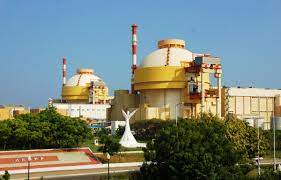Kudankulam Nuclear Power Plant:

Rosatom State Corporation of Russia has supplied the first batches of more reliable and cost-efficient nuclear fuel over the existing one, the TVS-2M nuclear fuel, to India for the Units 1 and 2 of Kudankulam Nuclear Power Plant (KNPP).
- Once the new TVS-2 M fuel is used in the next refuelling, the reactor will start operations with an 18-month fuel cycle.
- It means the reactor, which has to be stopped for every 12 months for removing the spent fuel and inserting the fresh fuel bundles and allied maintenance, will have to be stopped for every 18 months.
- Compared to the current fuel model, the TVS-2M fuel assemblies have a number of advantages making them more reliable and cost-efficient.
- Firstly, it is the rigidity of a bundle. Because of the welded frame, the fuel assemblies in the reactor core retain their geometry.
- The spacer grids protect the fuel rod cladding from fretting wear and the additional spacer grid makes the fuel assemblies more vibration-resistant.
- Secondly, the new fuel has increased uranium capacity — one TVS-2M assembly contains 7.6% more fuel material as compared to the earlier fuel bundles.
- Operation in longer fuel cycles also enhances the economic efficiency of a plant: As reactors have to undergo stoppage and refueling less frequently, the power units can produce more electricity.
- Russia is building the KNPP under an Inter-Governmental Agreement (IGA) of 1988 and follow on agreements in 1998 and 2008.
- The first stage, consisting of power units No. 1 and No. 2, was commissioned in 2013 and 2017, respectively.
- Power units No. 3, 4 and No. 5, 6 are are currently under construction.




